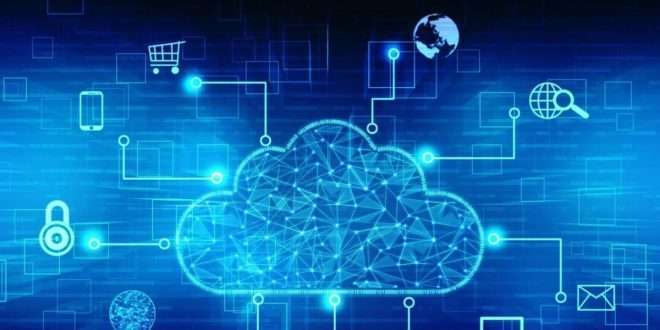Welcome to a new era of cloud hosting where cutting-edge technology meets unprecedented performance – Edge Computing. In this comprehensive guide, we will delve into the world of Edge Computing, understanding its power, benefits, and how it revolutionizes cloud hosting. If you’ve been searching for cheap cloud hosting, best cloud hosting, cloud web hosting, or reliable cloud hosting providers, you’re about to discover how Edge Computing is set to transform the landscape of cloud hosting.
Understanding Edge Computing: The Game-Changer
Edge Computing, in essence, brings computing resources closer to the source of data, reducing latency and improving the overall performance of cloud services. Unlike traditional cloud architectures where data is processed in centralized data centers, Edge Computing distributes data processing across multiple locations, often at the network edge. This ensures faster data transfer, enhanced reliability, and minimal downtime.
Edge Computing is set to change the way we experience cloud services, making real-time applications, IoT devices, and AI-powered systems even more efficient and responsive.
Key Advantages of Edge Computing
Reduced Latency:
By processing data closer to the end-users or devices, Edge Computing significantly reduces the time it takes for data to travel back and forth between servers and clients. This results in faster response times and a seamless user experience, crucial for applications requiring real-time interactions.
Enhanced Security:
With data processing taking place closer to the source, the risk of data breaches and cyber-attacks is reduced. Edge Computing can implement localized security protocols, creating an additional layer of protection for sensitive information.
Improved Reliability:
Traditional cloud architectures can suffer from single points of failure, leading to service disruptions. Edge Computing disperses the workload, ensuring that even if one node fails, other nodes can continue to function independently.
Bandwidth Optimization:
By processing data at the edge, Edge Computing reduces the amount of data that needs to be transferred to centralized data centers, optimizing bandwidth usage and potentially lowering operational costs.
Edge Computing in Action: Real-World Use Cases
Smart Cities:
Edge Computing enables efficient traffic management, public safety systems, and waste management in smart cities. Real-time data processing helps cities become more sustainable and responsive to the needs of their citizens.
IoT Applications:
The Internet of Things (IoT) relies on fast data processing and immediate actions. Edge Computing empowers IoT devices to respond quickly to events without relying on distant data centers.
Gaming and Augmented Reality:
Online gaming and AR/VR applications demand ultra-low latency for an immersive user experience. Edge Computing ensures minimal delays and smooth gameplay.
Autonomous Vehicles:
Edge Computing plays a vital role in autonomous vehicle technology, enabling rapid decision-making and reducing the risk of accidents.
Choosing the Right Edge Computing Provider
As Edge Computing gains traction, numerous cloud hosting providers are offering edge services. When selecting an Edge Computing provider, consider the following factors:
Geographic Coverage:
Choose a provider with a wide network of edge locations, ensuring optimal coverage and low latency for your target audience.
Scalability:
Ensure the provider can scale resources seamlessly as your requirements grow.
Security Measures:
Look for robust security protocols and encryption to safeguard your data.
Reliability and Uptime:
Check the provider’s track record for uptime and reliability.
The Future of Cloud Hosting: Edge Computing as the Driving Force
Edge Computing is poised to disrupt the cloud hosting landscape, paving the way for a new generation of applications and services. Its ability to process data closer to the edge offers unprecedented speed, security, and reliability, making it an ideal choice for modern businesses and developers.
As more industries adopt IoT, AI, and real-time applications, Edge Computing will become the driving force behind cloud hosting solutions. Embrace this revolutionary technology, and unlock the true potential of cloud hosting like never before.
Final Words
In conclusion, Edge Computing is a game-changer for cloud hosting, promising reduced latency, enhanced security, and improved reliability. By bringing computation closer to the source of data, Edge Computing empowers real-time applications and IoT devices, ensuring a seamless user experience. As this technology continues to evolve, businesses that adopt Edge Computing will gain a competitive advantage in an increasingly connected and data-driven world.
Commonly Asked Questions
Q1: Is Edge Computing only suitable for large enterprises?
A1: Not at all! Edge Computing benefits businesses of all sizes, from startups to large enterprises. Its advantages in reducing latency and enhancing security apply to various applications and industries.
Q2: How does Edge Computing differ from Fog Computing?
A2: While both Edge and Fog Computing process data closer to the source, Fog Computing typically focuses on localized data processing in a confined geographical area, whereas Edge Computing extends this concept to a broader network of locations.
Q3: Can I integrate Edge Computing into my existing cloud infrastructure?
A3: Yes, many cloud hosting providers offer Edge Computing services that can seamlessly integrate with your existing infrastructure. Consult with your provider to explore the options.
Q4: Does Edge Computing work well with traditional cloud solutions?
A4: Absolutely! Edge Computing complements traditional cloud architectures by adding a distributed layer of processing, enhancing performance, and increasing redundancy.
Q5: Is Edge Computing secure for sensitive data processing?
A5: Edge Computing can be highly secure, especially when implemented by reputable cloud hosting providers. Data encryption, localized security measures, and secure connections all contribute to safeguarding sensitive information.
 webfily
webfily



